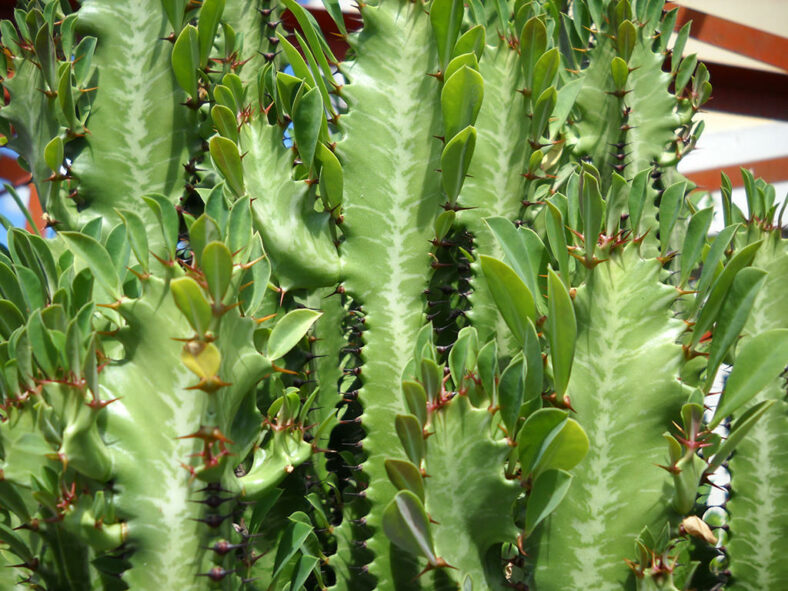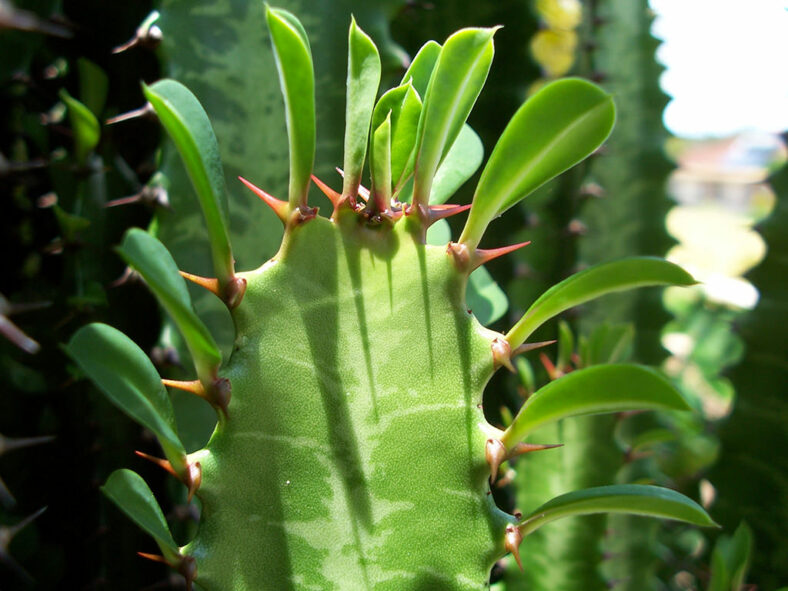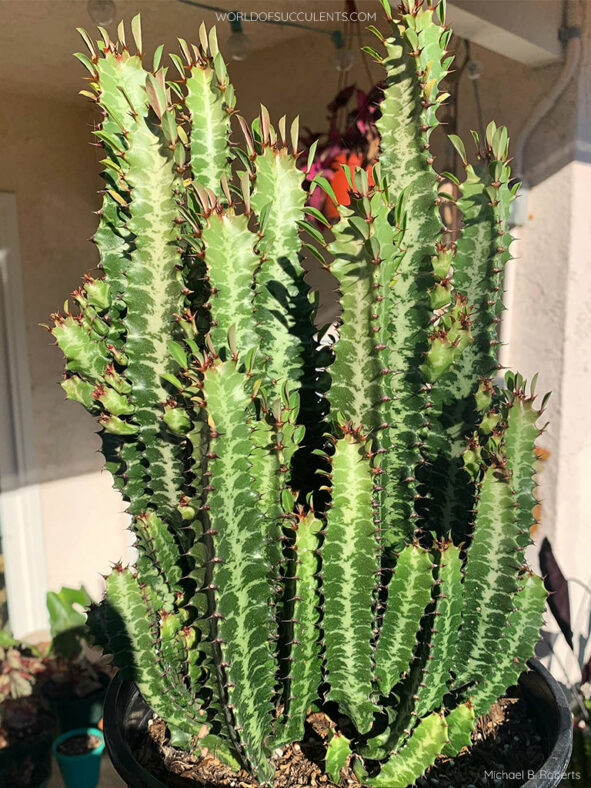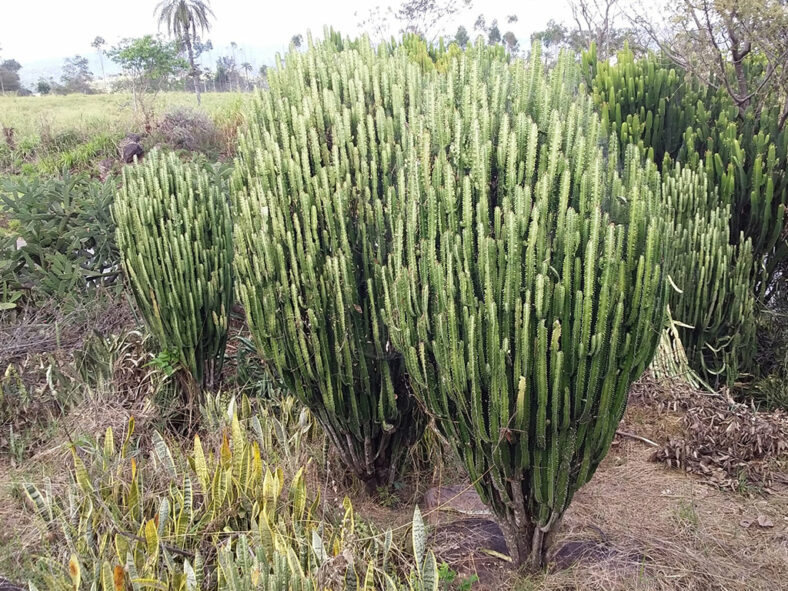Euphorbia trigona is a popular plant that is widely cultivated as an ornamental, hedge, and potted plant in tropical and subtropical regions.
Scientific Name
Euphorbia trigona Mill.
Common Name(s)
African Milk Tree, High Chaparral, Cathedral Cactus, Abyssinian Euphorbia
Synonym(s)
Euphorbia hermentiana
Scientific Classification
Family: Euphorbiaceae
Subfamily: Euphorbioideae
Tribe: Euphorbieae
Subtribe: Euphorbiinae
Genus: Euphorbia
Etymology
The specific epithet "trigona" (pronounced "try-GOH-nuh") means "trigonal; three-angled; having three angles" and refers to the mostly three-sided stems of this species.
Origin
The probable origin of Euphorbia trigona is Central Africa.
Description
Euphorbia trigona is a succulent shrub or small tree with upright stems branching from above the base. It can grow up to 10 feet (3 m) tall. The stems are 4-angled to nearly cylindrical, while the branches are distinctly 3-angled, ascending, and appressed to the stem. The stem and branches are dark green, mottled in the center, with whitish or light green, V-shaped patterns. The paired spines can reach a length of 0.15 inches (0.4 cm) and are produced on spine shields about 0.4 inches (1 cm) apart along the stem ridges. The leaves are green and obovate, growing between the two spines on each ridge, and can measure up to 1.2 inches (3 cm) long and 0.4 inches (1 cm) wide. Even though they are deciduous, the leaves persist for some time and are often present.
This plant is not known to flower and is possibly a natural hybrid.

Forms and Cultivars of Euphorbia trigona
How to Grow and Care for Euphorbia trigona
Light: Providing your Euphorbia trigona with ample sunlight is crucial for optimal growth. Place it near a sunny window or move it to your balcony or garden during the warmer months, gradually increasing sun exposure to avoid sunburn.
Soil: Use a well-draining soil, either a commercial potting mix formulated for succulents or a mix you create yourself.
Temperature: While high summer temperatures are not a problem, low winter temperatures can damage or kill your plant. Euphorbia trigona grows best in USDA Plant Hardiness Zones 10a to 11b, with average minimum winter temperatures ranging from 30°F to 50°F (-1.1°C to 10°C).
Watering: From spring to fall, water the plant when the top inch (2.5 cm) of the soil feels dry. Reduce watering in winter and give it just enough water to prevent wilting. In the warm season, the evening is the best time to water.
Fertilizing: To ensure the potted plant receives sufficient nutrients, apply a balanced 10-10-10 NPK fertilizer diluted to 1/4 strength weekly during the growing season.
Repotting: Although your Euphorbia trigona does not need to be repotted often, it will benefit from repotting when it outgrows its pot. The repotting is best done in early spring at the beginning of the growing season. Wear gloves, protective clothing, and appropriate eye protection when handling this plant.
Propagation: Propagating this plant by stem cuttings during the growing season is straightforward.
Learn more at How to Grow and Care for Euphorbia.
Toxicity of Euphorbia trigona
Euphorbia trigona produces a poisonous white milky sap that may cause burns or irritation if it comes into contact with the skin or eyes. Therefore, it is best to keep this plant out of reach of children and pets.
Links
- Back to genus Euphorbia
- Succupedia: Browse succulents by Scientific Name, Common Name, Genus, Family, USDA Hardiness Zone, Origin, or cacti by Genus
Photo Gallery
Click on a photo to see a larger version.


